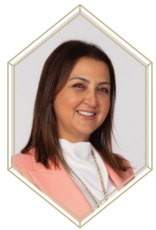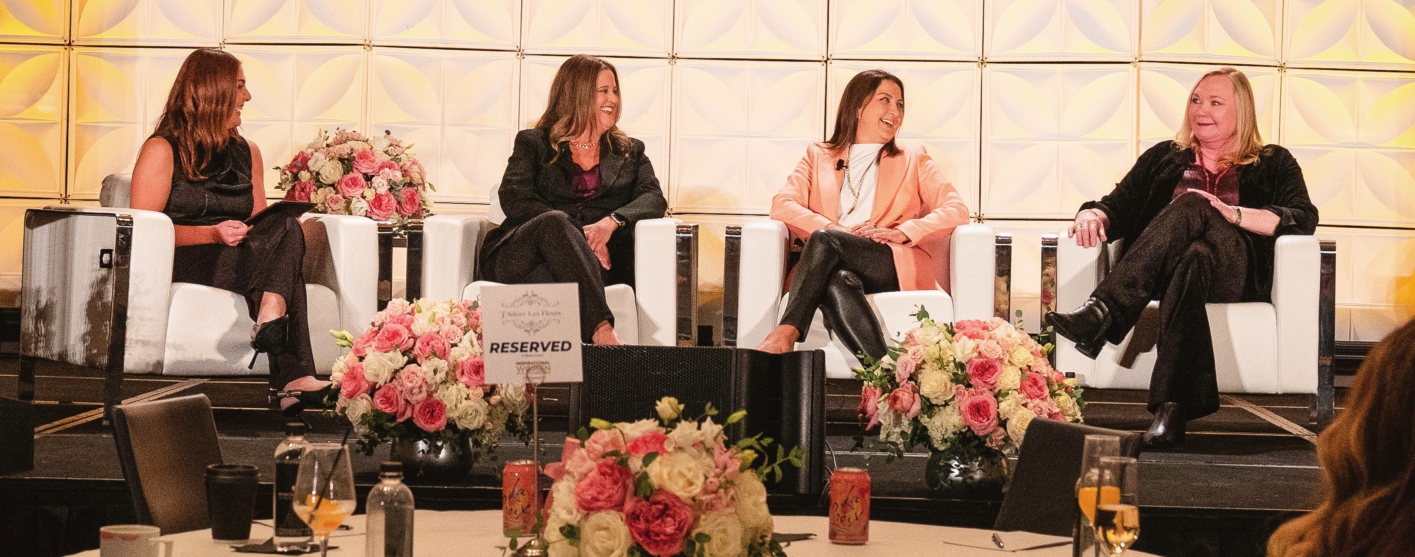Women Leading Marketing Innovation
“One thing that is critical to consider as you start your career is that you need to understand the skills that you possess.”
- Andrea Bras
Moderator

Talar MALAKIAN
Chief Marketing Officer
Phonexa
Talar
Malakian is the chief marketing officer at Phonexa, responsible for the
company’s marketing and advertising strategies. With expertise in B2B
enterprise SaaS and emerging tech, she has been a go-to market advisor
and demand generation leader for high-growth companies. Malakian has
helped purpose-driven organizations build brands and accelerate
pipelines. Before Phonexa, she led marketing at Metaplex and RECUR. She
holds a bachelor’s in English from UC Irvine and an Executive MBA from
Pepperdine University.
Speakers

Andrea BRAS
VP, Product Marketing
Viant Technology
Andrea
Bras is a dynamic leader with over 20 years in digital marketing,
currently serving as vice president of product marketing at Viant
Technology. Known for her strategic expertise, partnership building and
commitment to innovation, she has driven impactful product launches,
boosted sales enablement and guided Viant’s brand through key
milestones. A passionate mentor and community advocate, Bras empowers
others while advancing Viant’s success, exemplifying her dedication to
both professional excellence and personal accountability.

Narine GALSTIAN
Chief Marketing Officer
SADA
Narine
Galstian, chief marketing officer at SADA, has over 25 years of B2B/B2C
marketing experience. She’s driven significant growth at tech
companies, leading teams in branding, PR, events, solutions marketing
and demand generation. Galstian has led SADA to multiple Google Cloud
Partner of the Year awards and a spot on Gartner’s Magic Quadrant for
Public Cloud IT Transformation Services. Her vision and innovative
approach have contributed to SADA’s success, including its acquisition
by Insight Enterprises.

Laura MCHOLM
Co-Founder & Director of Marketing
NorthStar Moving Company
Laura
McHolm is the cofounder of NorthStar Moving Company. Her extensive
experience and insight is based on working to disrupt a service business
that lacked service in a male-dominated world. McHolm is changing the
way we move by selling the “red carpet treatment.” Her fast-growing,
privately-held company is the go-to mover for A-List celebrities and The
Getty and has been featured in Elle Décor, The Hollywood Reporter,
Vanity Fair, the Robb Report and more.

ON NEW TECHNOLOGICAL ADVANCEMENTS THAT ARE CHANGING HOW WE BUILD BRANDS AND ACQUIRE CUSTOMERS
Andrea Bras: Tools
and innovation come across my desk and you have to decide where to
spend your time. We recently launched a sales enablement technology.
When you have to empower your sales team, they need the tools and
resources to be effective. We had legacy technology hosting things and a
key element was discovering what we needed to solve. We worked with
vendors and landed on a company that changed things overnight. We get
engagement data and we can take action. Make sure that you have key
stakeholders involved and make a big splash.
Narine Galstian: We
have meeting notes taken by AI and it can create a list of action
items. I encourage everyone to test it out and learn how to prompt these
amazing tools. I empowered my team to test it out. It’s amazing what is
possible. There are fears about the technology taking my job. I feel
responsible to make sure that my team stays ahead of that without
feeling threatened. We use all the automation tools. Sales teams should
engage to learn more about the customer before a call.
Laura McHolm: It’s
important for a consumer company to meet them where they are. You want
to make sure that you integrate with your system. People don’t read
anymore. You have to be able to distill information into bite-sized
pieces. We do infographic videos. And now you have to be everywhere -
you don’t just go to one site anymore. People need to answer good and
bad reviews and embrace them. For AI, we’ve invited our content creators
to be on AI. We’ve found that AI is not as good, but it’s getting
better. The more that things get automated, the more that we will desire
to talk to real people.
ON INNOVATION AND CHALLENGING CONVENTIONAL BUSINESS PRACTICES
McHolm: Moving
companies don’t typically have marketing departments. I met a lot of
resistance, but I want to stand out by doing things differently. Moving
is a life event that happens amid the backdrop of life. The hard part is
that I’m still constantly having people look at what other companies
do, even if it doesn’t work – they don’t track ROI like we do.
Galstian: I’m
on the B2B side of marketing, but you need to connect with humans.
Technology feels like a different buyer and that’s not the case. Human
to human connection is very important and I want to do intimate events
that are specialized and larger brand building events. I want to tell
customer stories. That’s what’s most important. You can live and die by
reviews. Make your specific customer the hero in a story whether it’s in
a video, podcast or a written format.
Bras: We
didn’t have as much growth early on and we were small, but we started
to grow and innovate. We started to have a lot of stakeholders involved.
Paths became less clear. One or two priorities multiplied. We have to
deal in the technical world and then simplify it for our sellers. We
created a strategy and unified our team. It’s been hugely effective.
ON MENTORSHIP AND MENTORING OTHERS
McHolm: Listening
is key. Look at what people have and bring and foster their interests.
If you don’t have a team that supports each other and celebrates
successes, they shouldn’t be on your team. You need to surround yourself
in all aspects of your life with people who support you and build you
up.
Bras: One
thing that is critical to consider as you start your career is that you
need to understand the skills that you possess. Make sure that you’re
happy with where you are at. It’s okay to change direction. Be
accountable so that you grow and develop. As a mentor, try to understand
other people’s experience.
Galstian: I
had wonderful mentors that helped me make the shifts and see growth and
opportunity. You want to give that to the next generation of leaders.
Sometimes people need help seeing their potential. You as the leader
need to pay attention and can call that out and push to hone skill sets
and take on challenges. As leaders, that’s part of our responsibility.